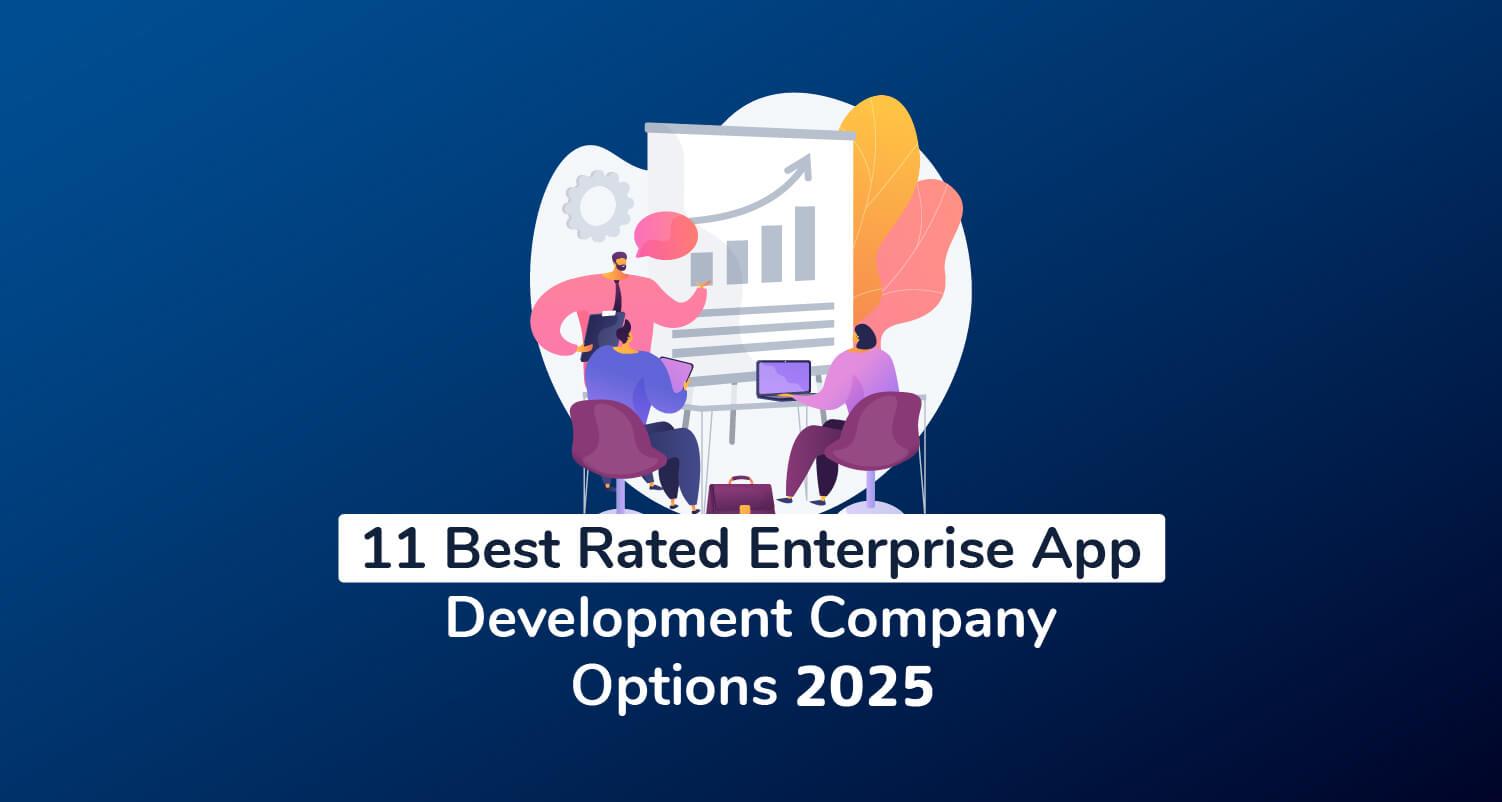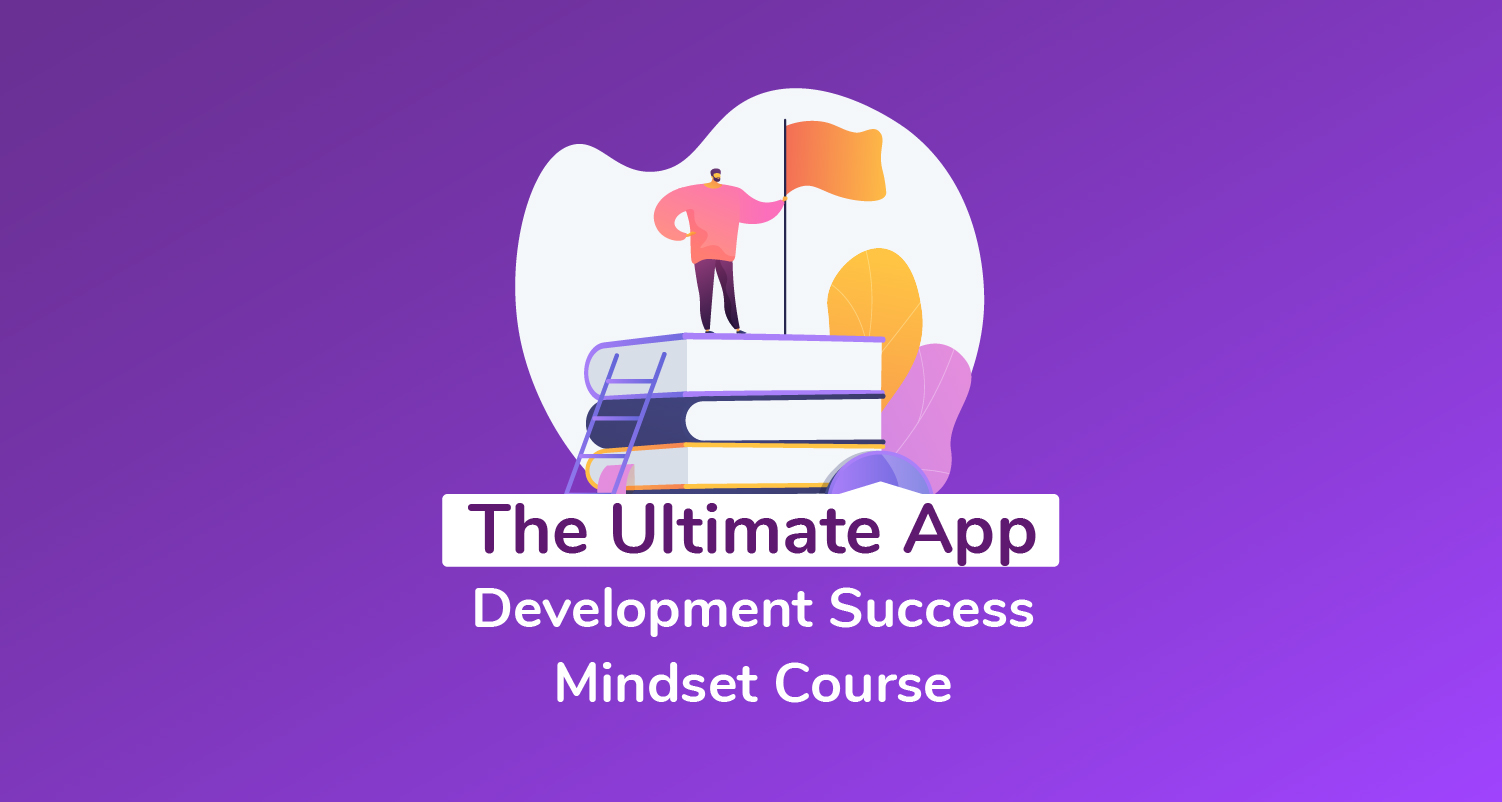
Daily Active Users – Advanced Strategies To Increase App Engagement
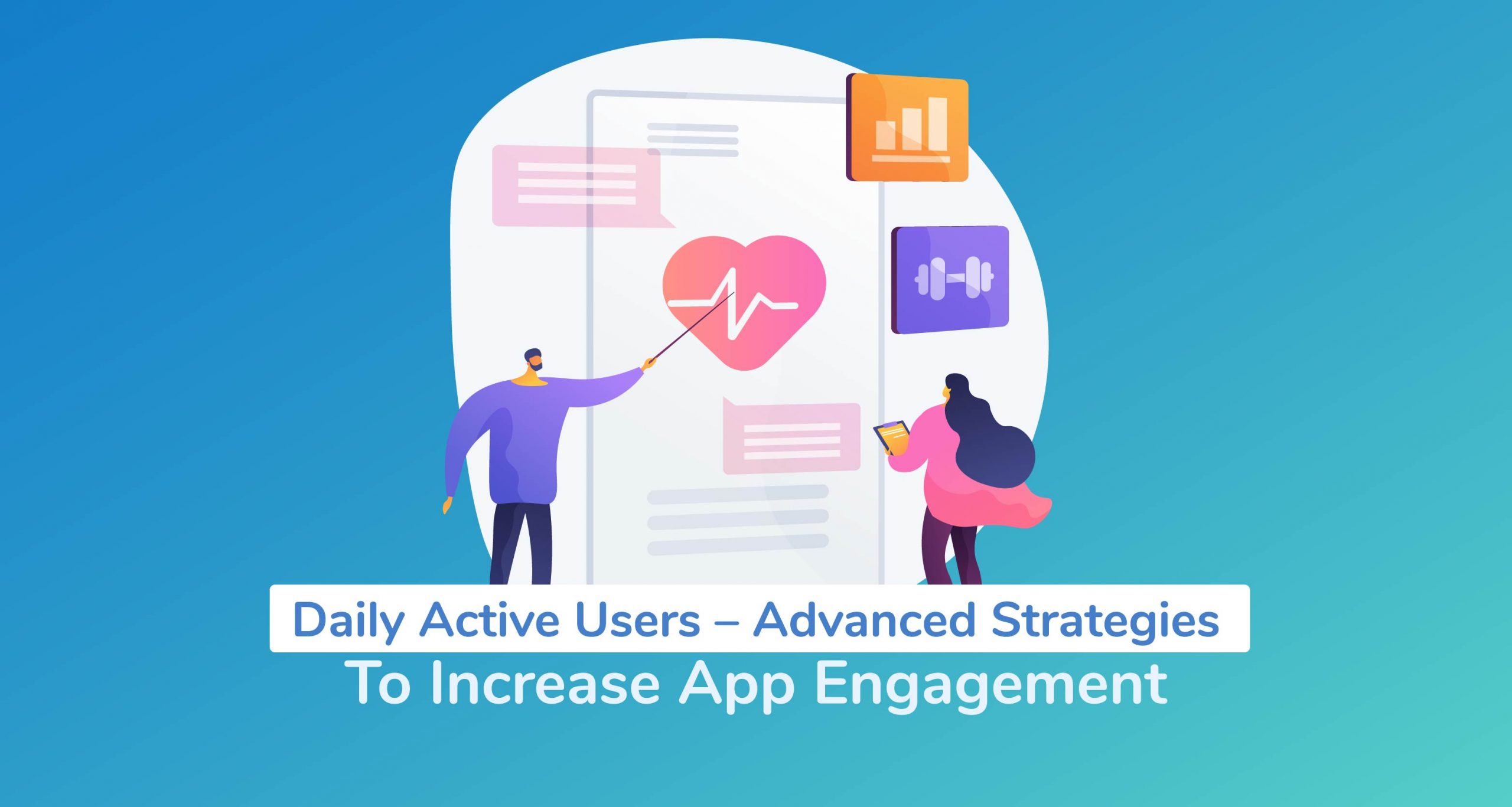
To make your mobile app a hit, you need the type of user acquisition campaigns that specialize in driving app downloads. But then to turn it all into a real mobile app success story, you ought to look beyond app installs by optimizing even the subsequent app retention and user engagement.
Table of Content
- Why Daily Active Users And Mobile App Engagement Matter
- App Engagement Tricks Guaranteed To Grow Your Daily Active Users
- Key Takeaways for Growing Your App’s User Engagement And Active Users
- Over To You
You see, the problem with mobile app installers is, that most of them never hang around long enough to provide value.
Expect to lose about 70% of your app users within hours of downloading the app, and then over 20% more by day 30. It turns out that, overall, mobile app users tend to uninstall their newly downloaded apps after just 5.8 days of usage.
What’s even more distressing is the fact that app user acquisition isn’t cheap. Each iOS and Android app user now comes at a cost of about $3.52 – which ultimately translates into huge monetary and opportunity losses for app owners.
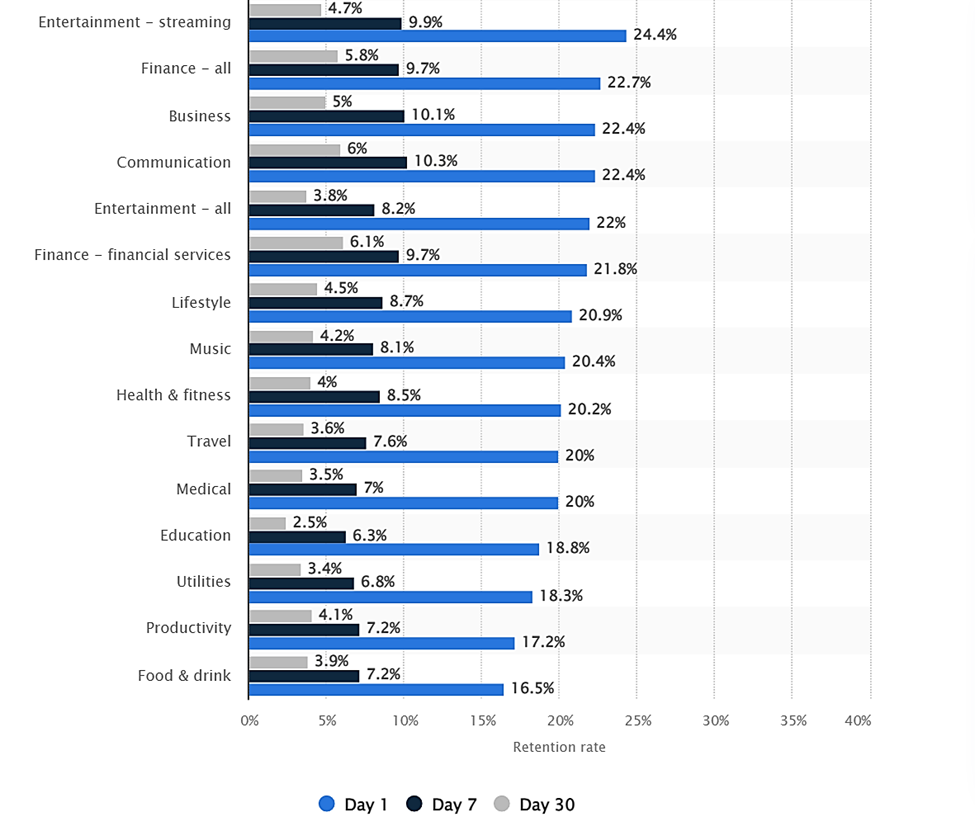
Now, in the face of these market complexities, mobile app success is fundamentally driven by your ability to turn app downloads into meaningful long-term relationships.
Our App User Acquisition vs App User Retention guide already explores mobile app marketing strategies that you could leverage while at it.
In this follow-up piece, however, we’ll be looking at things from a different perspective. While the previous article explores the most appropriate outreach strategies, this provides an in-depth roundup of proven user engagement tricks that’ll boost your app’s daily active users.
But first, we need to make sure that we’re on the same page regarding the basic concepts of “user engagement” and “daily active users”. What do they entail, and what does it all have to do with mobile app success?
Why Daily Active Users And Mobile App Engagement Matter
Mobile App Engagement
Mobile app engagement, for starters, refers to how users interact with an app. These interactions principally occur through the app’s front-end interface, from where users access the touchpoints for controlling app operations.
Common app engagement instances include:
- When users open the app.
- When users spend time exploring the app’s functionalities.
- When users send messages through the app.
- When users read content from the app.
- When the app is used for shopping, socializing, gaming, etc.
As such, you’ll find that mobile app engagement is usually defined by a wide range of metrics. For instance, whereas some prefer to measure engagement by the number of app launches per user, others choose to quantify it by the duration of usage per session.
Keep in mind, though, that engagement rate is usually calculated by dividing the number of active users by the total count of registered users. This is meant to establish the proportion of app interactions from your overall user base – with higher app engagement rates signifying that users are finding value in the app.
But, don’t mistake it for app retention. While your retention rate describes the percentage of users who are still leveraging your mobile app after a specific period, app engagement specifies the instances, frequency, and ways in which the users interacted with the mobile app.
Take TikTok, for example. Its average 7-day user retention rate in the U.S. is about 10%. Then the corresponding daily engagement rate stands at about 47.4% among U.S. Android users.
That means it churns about 90% of its app installs within a week, while nearly half of the remaining users end up using the app on a daily basis.
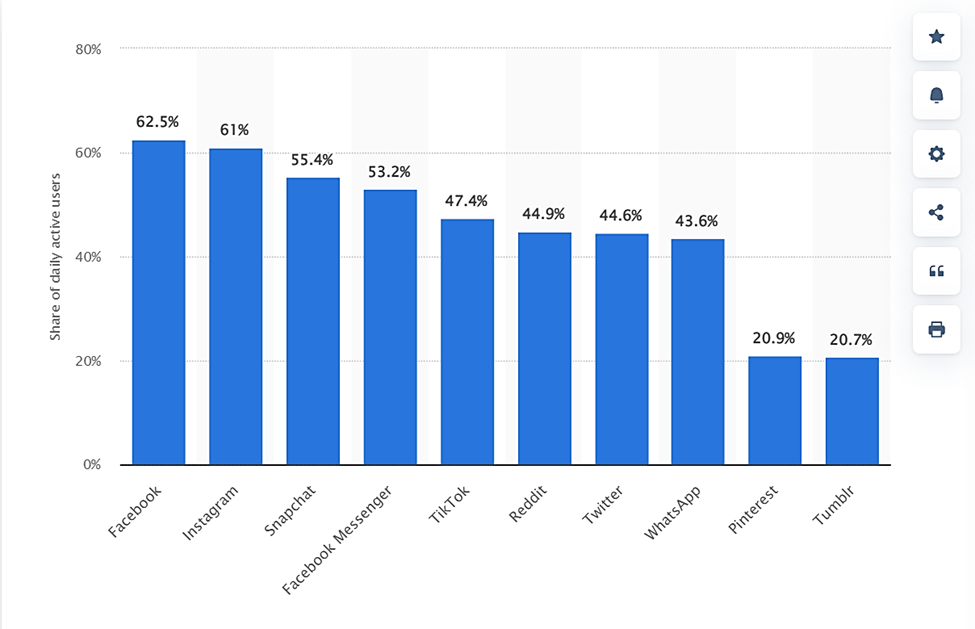
With that said, it’s worth noting that although all app interactions are forms of user engagement, not all engagement instances can be qualified as “active” usage.
Now, this is where things start to get complicated for “active users” and “engaged users”.
Daily Active Users
“Daily Active Users” might seem like a blanket term for all users who happen to engage your app in a day. As it turns out, however, DAU doesn’t necessarily encompass all forms of app user engagement.
Daily Active Users metrics are, instead, confined to a specific set of actions. You could say the term basically represents the number of unique app users who perform a specific activity within a duration of 24 hours.
What you happen to set as the activity here depends on the build, purpose, and functionalities of your app. You ought to zero in on the operations that represent the overall value users are getting from your mobile app.
Take the example of an online shopping app.
Such a business wouldn’t benefit much from app users who are only interested in reading product reviews. Instead, it would be much better off focusing on users who show a high likelihood of shopping – through actions like comparing prices, adding items to the cart, searching for coupon codes, calculating shipping costs, and maybe sharing items of interest.
Now, these are the actions whose engagement ought to be tracked through Daily Active Users analytics. The trick is to focus on the app engagements that are directly linked to what you fundamentally intend to accomplish with your mobile app.
When it comes to travel apps, for instance, you could settle for actions such as calls to vendors, hotel searches, and location sharing.
Entertainment apps, on the other hand, would prioritize gaming instances, music, and video streaming, social sharing, plus account registrations.
Then as for social networking apps, daily active users would be the ones who leave comments, publish posts, like postings, send messages, or share items of interest.
Whatever app category you fall in, you should be able to find an appropriate set of high-value actions. At least with that, you get to prioritize the most important forms of engagement in your app retention campaigns. This is the secret to growing your daily active users, which would then lead to better ROI and more profitability.
App Engagement Tricks Guaranteed To Grow Your Daily Active Users
The engagement levels within your mobile app are largely dictated by the way users experience the core offerings. The more refined the experience, the deeper they’ll engage and interact with your mobile app, which then translates into increased active daily usage.
In case you’re feeling a little intimidated by the scale of the project, rest assured that this doesn’t have to be a large or deeply technical undertaking. You don’t necessarily need huge feature changes or a major UX redesign to optimize your app engagement. It just so happens that even the smallest non-technical tweaks can hugely improve the customer experience within your app.
We’ve included a couple of solid ones in this roundup, which has been prepared after comparing the results from hundreds of highly strategic campaigns. While there are many alternative approaches you could take, these four have emerged as the most impactful app engagement methods for boosting active users across both iOS and Android mobile apps.
Here are all the details, along with appropriate case studies.
#1. Personalize The Onboarding Process For App Users
First impressions don’t apply in the App Store Optimization alone. Once prospects are moved by your App Store screenshots and preview video, they’ll be downloading the app with pretty high expectations – the outcome of which will be based on how the first engagement goes.
Here’s the problem, though. Today’s mobile app users are much more fickle, impatient, and demanding than ever. They want a simple and seamless experience from the moment they begin interacting with a newly downloaded app.
As such, I’d advise you to take this as some form of a first date – one where you only have a couple of seconds to make a lasting impression.
Don’t overthink the steps, though. You could, for instance, just start with a basic but stunning welcome screen. This alone places your app in the top 60%, as 40% of the applications on the market today lack a welcome screen.
On welcoming them, the next step would be systematically ushering the app users into the mobile app. This is where you hit them with structured user onboarding.
Consider, for example, developing omnichannel onboarding experiences that combine in-app pointers with external messaging channels. You could even capitalize on push notifications, as their onboarding messages have shown to increase app retention by 71% over two months.
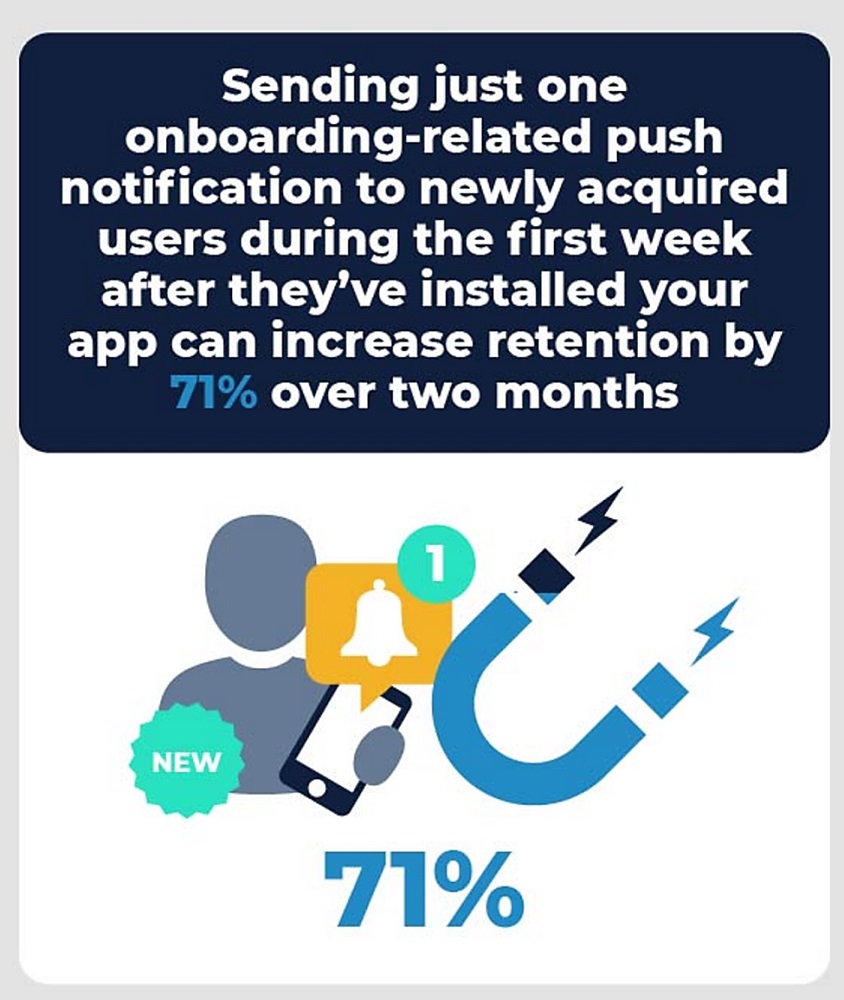 The impact of push notifications on onboarding. Source: Invespcro
The impact of push notifications on onboarding. Source: Invespcro
But, don’t leave it at that. To make the process even more intuitive and engaging, you might want to methodically personalize the whole onboarding experience. Instead of explaining how the mobile app works, find ways to intuitively show each user how they could solve their specific problems with your solutions.
The app user data for this could be obtained through signup forms, or maybe in-app micro surveys with automated close-ended queries and segmentation.
Mobile app onboarding case study: Slack
Slack is one example of a mobile app that comes with a well-structured onboarding flow.
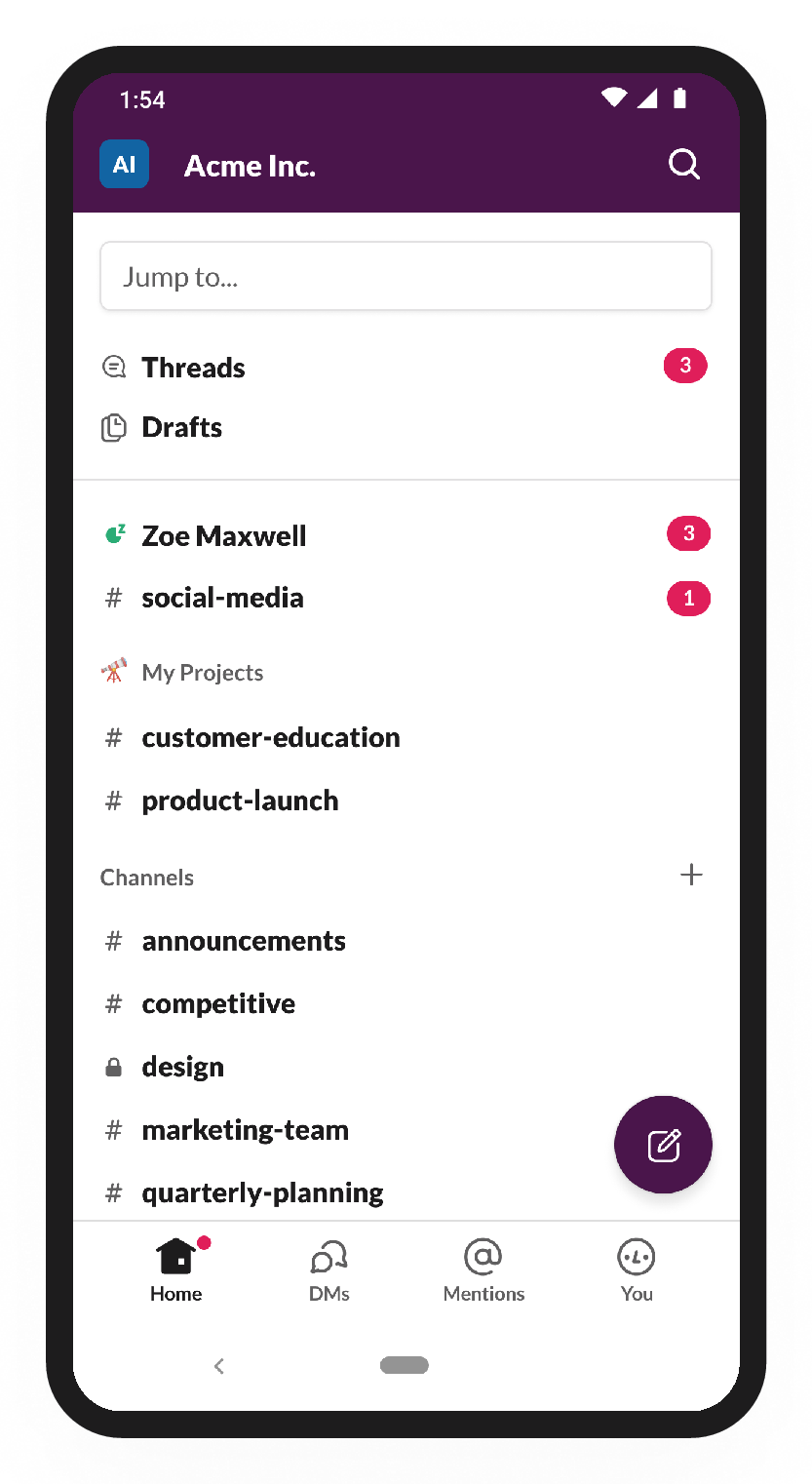
Once you launch it, the app greets you with a neat welcome screen, along with a series of sliders showcasing the main perks of using the app.
And when you’re done checking them out, you get to sign up in seconds, as well as create your own custom teams using basic step-by-step prompts.
The subsequent screens provide additional customization options in the same minimalistic theme – allowing you to choose whether to send a one-click sign-in magic link to your mailbox or maybe turn on push notification alerts.
#2. Gamify The App User Experience
In 1998, Matthias Koepp – now a professor of neurology at the University College London Queen Square Institute of Neurology – conducted a research study on how the mind reacts to video game stimulation. His findings were that adult brains tend to release striatal dopamine as players advance through a game that keeps offering increasingly difficult challenges.
This same principle applies even in today’s gamified experiences. The feel-good hormone keeps us deeply immersed through gameplay, and any achievements we make while at it always trigger an overwhelming feeling of accomplishment.
When it comes to mobile app development and marketing, you could capitalize on the whole phenomenon to boost user engagement. The trick is to gamify your app user experience to the point of eliciting intense human emotions – which would subsequently raise not only the app user retention rates but also the corresponding count of daily active users.
Keep in mind that this strategy is not restricted to gaming apps. Even other categories of mobile apps should be able to gamify their user experiences for increased app engagement and growth. You just need to find creative ways to challenge and reward your app users as they interact with the mobile app.
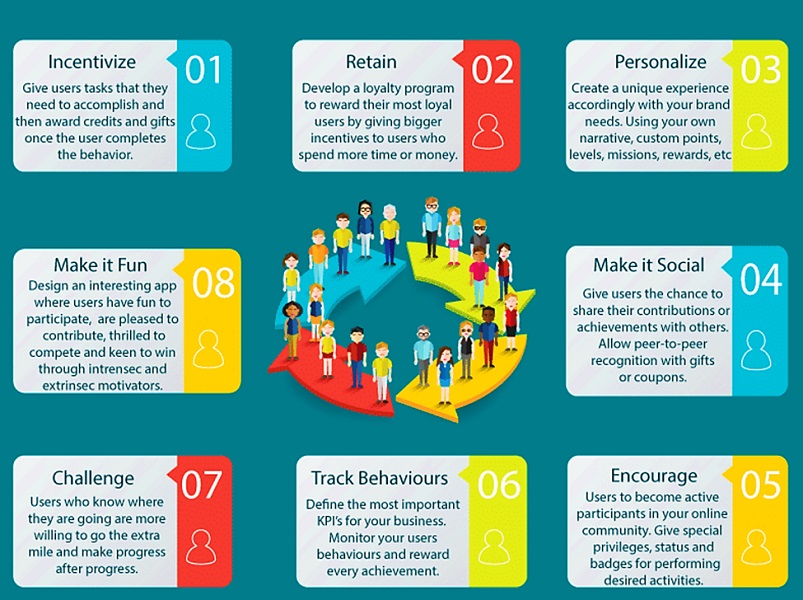 Mobile app gamification. Source: Mambo.io
Mobile app gamification. Source: Mambo.io
Common in-app rewards include stuff like free trials, discounts, and coupons. But, don’t limit yourself to purchase-related goodies. You could, otherwise, engage your app users with experience-oriented virtual rewards such as badges, trophies, and special avatars.
This would be a good way to publicly recognize long-term users, and consequently, motivate other users to strive for exclusive rewards.
Mobile user experience gamification case study: Todoist
One non-gaming mobile app that has perfected the art of gamification is Todoist. The project management app has gamified its task handling workflows, turning traditionally dull productivity processes into highly gratifying engagements.
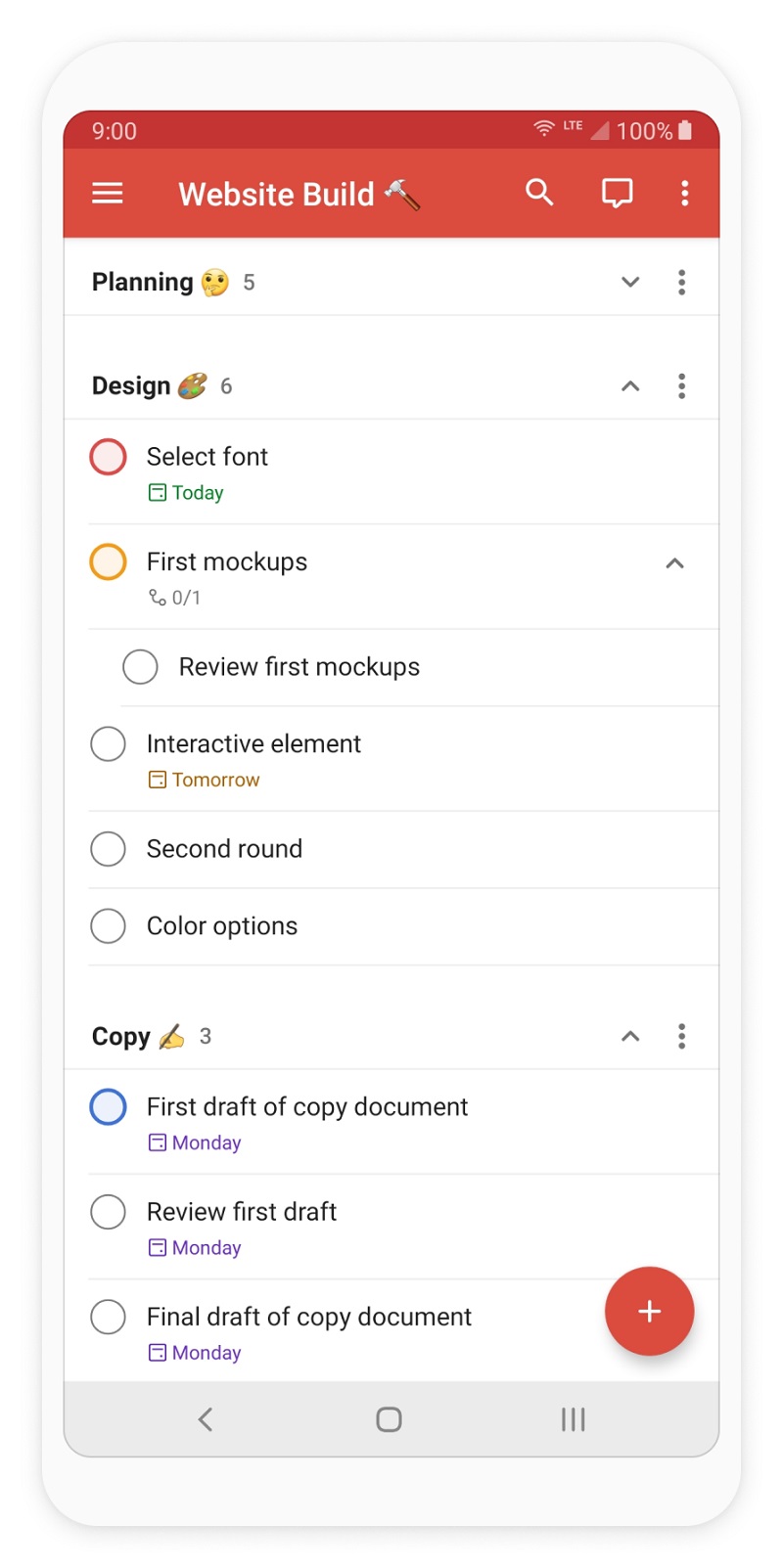
It comes with a point-based reward system, which gives app users special “karma” points for each successfully completed task. Meanwhile, missed deadlines attract deductions, which app users understandably try to avoid at all costs.
Then if you manage to stack the “karma” points, you could flaunt them across social media, thanks to Todoist’s social sharing features. Otherwise, it’s also possible to use the gains to unlock extra levels.
#3. Build Personalized Omnichannel User Experiences
Now that consumers are exceedingly moving on from single-channel journeys, user engagement shouldn’t be confined to in-app experiences.
Look around and you’ll notice just how dynamic today’s cross-platform ecosystems have grown. Consumers are now finding it easy to exchange data across separate applications, platforms, and devices – which forms an intricate network of omnichannel workflows.
You could, for example, begin a task on your iPhone app, and then later switch everything to a PC, before finally finishing it all up on an iPad.
The same applies even in shopping – with 73% of consumers today utilizing multiple channels in their shopping journey. That means that you’ll need an omnichannel-optimized experience if you hope to keep such prospects engaged and daily active users growing.
Now, for the sake of clarity, omnichannel engagement entails going beyond the boundaries of native apps to create a seamless user experience across different platforms, devices, and environments. Your mobile app users should be able to switch platforms and still pick up from where they left off on your mobile app.
This is best achieved by setting up a multiplatform ecosystem and then syncing data between the individual touchpoints in real-time. You could, for instance, create an Android version of your iOS app, along with a supplementary web version that’s fully optimized for both PC and Mac.
Some of the popular brands that have achieved this form of omnichannel continuity include Google Workspace, Spotify, and Slack.
Omnichannel user experiences can also be achieved by extending your mobile app’s functionalities to support processes across external user touchpoints. That means instead of replicating your app, you essentially use it to complement user operations on secondary channels.
For instance, you could have the mobile app assisting customers as they shop in-store.
Whichever approach you choose from the two, expect the omnichannel experiences to deliver an engagement rate of at least 18.96% – a stark contrast to the 5.4% you’d otherwise get from a single channel.
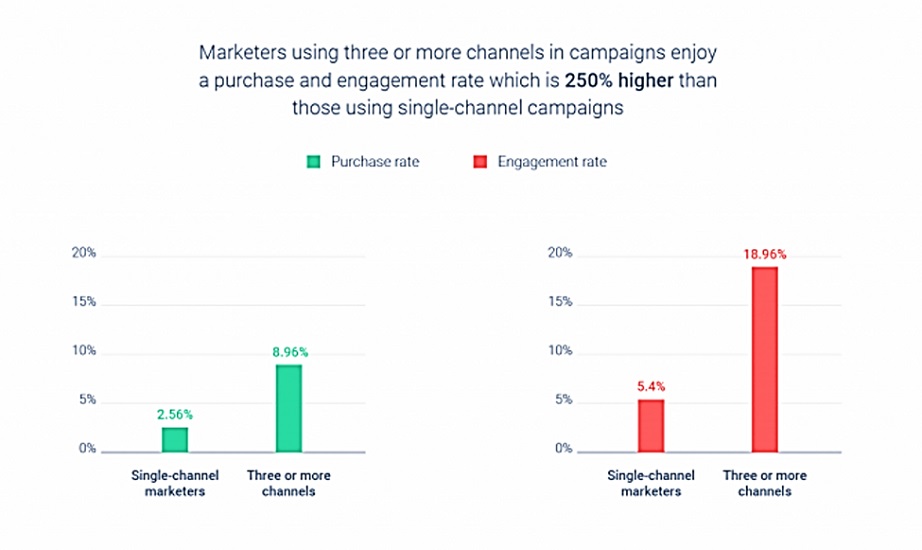 Omnichannel vs single channel engagement rates. Source: Omnisend
Omnichannel vs single channel engagement rates. Source: Omnisend
Mobile omnichannel user experience case study: Apple iCloud
Apple joins the ranks of Google Workspace, Spotify, and Slack with its iCloud service, which is built natively into all Apple devices.
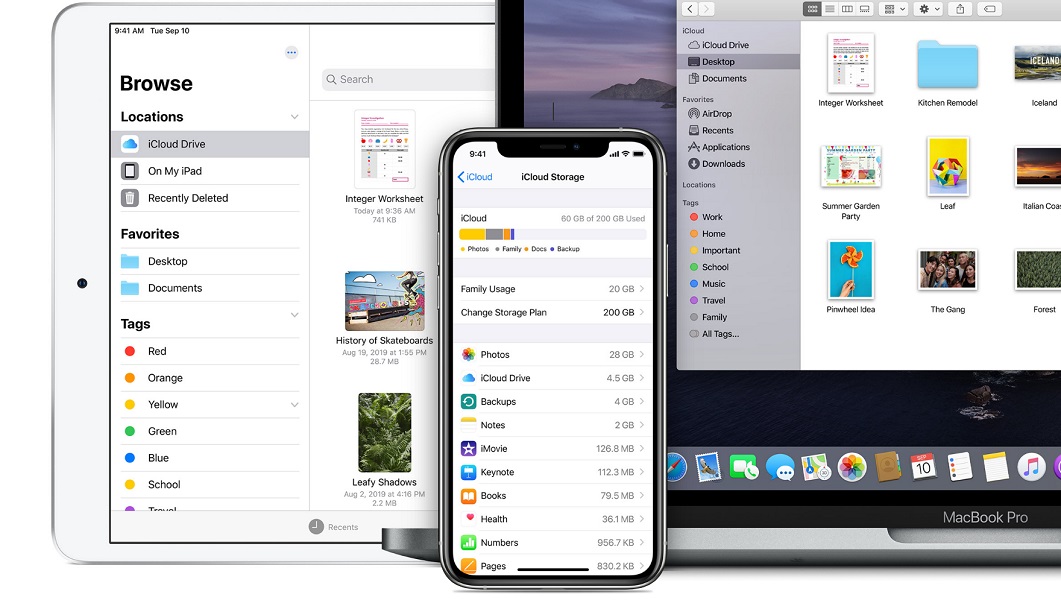 Apple iCloud omnichannel experience. Source: Apple
Apple iCloud omnichannel experience. Source: Apple
If you enter the same account credentials to different devices, iCloud automatically syncs all the pertinent files, settings, and data to offer a seamless omnichannel experience.
This saves you the trouble of transferring stuff when switching devices. All your contacts, notes, documents, videos, and photos can always be accessed in their original form across all the connected devices.
#4. Collect And Act On User Feedback
App engagement optimization is not a static process. You need to keep adjusting the campaign variables according to any developing changes in the market, brand, or user parameters.
For instance – you’ll notice that with time, the needs and preferences of your mobile app users will morph. They’ll upgrade devices, bring in additional services, switch platforms, grow their data footprint, and whatnot. All these forms of changes come with their complications, which you should be able to flag and respond to accordingly.
The most reliable way of keeping tabs on the changing consumer trends is to get the word directly from the horse’s mouth. You need to maintain two-way communication with your mobile app users by leaving your customer support lines open for messages and user feedback.
A word of caution, though. We are not talking about App Store reviews and ratings. Rather, you might want to keep everything private by providing your own in-app review system.
At least then, you get to collect both positive and negative feedback without compromising your App Store Optimization (ASO) scores. You can then use the insights to get to the bottom of any issues that might be negatively affecting your app engagement and overall user experience.
As for the data collection medium, a basic contact form would be fine for a start. But, don’t leave it at that. For better response rates from your mobile app users, consider running micro surveys from time to time.
Each of these should carry a maximum of five questions. It turns out that three-quarters of consumers would be perfectly open to answering one to five survey questions. Any more than that would invite a disproportionately high rate of rejection.
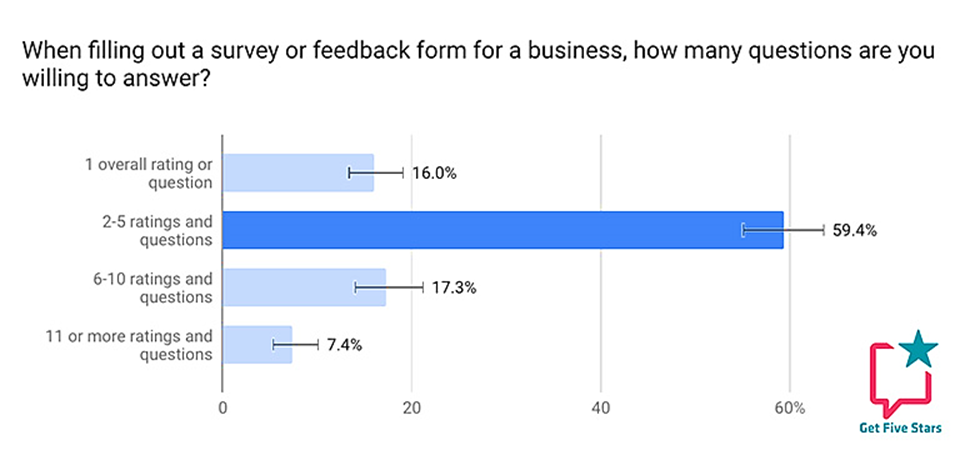 The number of survey questions consumers are willing to answer. Source: GatherUp
The number of survey questions consumers are willing to answer. Source: GatherUp
You could, otherwise, bring in specialized user feedback tools for deep in-app qualitative data collection. Some of the solutions that we’ve successfully tried out on various mobile apps include HelpStack, Instabug, Apptentive, and Helpshift.
Now, when the data and comments start streaming in, try to maintain high responsiveness for the sake of strengthening relationships with your daily active users. Your mobile app users would feel valued and appreciated if you took the time to address their concerns.
But, while that would increase app engagement to some extent, you stand to gain so much more by analyzing and acting on the user feedback.
Examples of in-app survey questions
Here are samples of both open and close-ended queries that you could run in your mobile app survey. All these are meant to provide you with actionable user feedback that would be helpful in growing your daily active users, along with the corresponding app engagement levels:
- What do you least enjoy about the mobile app? [Open-ended]
- What do you most enjoy about the mobile app? [Open-ended]
- How would you rate the intuitiveness of the tools? [On a scale of 1 – 5]
- How would you rate the overall feel and look of the mobile app? [On a scale of 1 – 5]
- How satisfied are you with the controls and navigation of the mobile app? [On a scale of 1 – 5]
- How satisfied are you with the mobile app’s loading speeds? [On a scale of 1 – 5]
- What important feature would you say is missing from the mobile app?[Open-ended]
Key Takeaways for Growing Your App’s User Engagement And Active Users
All in all, here are the core pointers from everything we’ve discussed:
- Expect to lose about 70% of your app users within hours of downloading the app, and then over 20% more by day 30.
- Mobile app users tend to uninstall their newly downloaded apps after just 5.8 days of usage.
- Each iOS and Android app user now comes at a cost of about $3.52 – which ultimately translates into huge monetary and opportunity losses for app owners.
- Mobile app engagement, for starters, refers to how users interact with an app. These interactions principally occur through the app’s front-end interface, from where users access the touchpoints for controlling app operations.
- The app engagement rate is usually calculated by dividing the number of active users by the total count of registered users.
- While your retention rate describes the percentage of users who are still leveraging your mobile app after a specific period, app engagement specifies the instances, frequency, and ways in which the users interacted with the mobile app.
- Although all app interactions are forms of user engagement, not all engagement instances can be qualified as “active” usage.
- DAU doesn’t necessarily encompass all forms of app user engagement.
- Daily Active Users metrics are confined to a specific set of actions. You could say the term basically represents the number of unique app users who perform a specific activity within a duration of 24 hours.
- Daily Active Users analytics focus on the app engagements that are directly linked to what you fundamentally intend to accomplish with your mobile app.
- The engagement levels within your mobile app are largely dictated by the way users experience the core offerings. The more refined the experience, the deeper they’ll engage and interact with your mobile app, which then translates into increased active daily usage.
- Starting with a basic but stunning welcome screen places your app in the top 60%, as 40% of the applications on the market today lack a welcome screen.
- Capitalize on push notifications, as their onboarding messages have shown to increase app retention by 71% over two months.
- Consider methodically personalizing the whole onboarding experience. Instead of explaining how the mobile app works, find ways to intuitively show each user how they could solve their specific problems with your solutions.
- Adult brains tend to release striatal dopamine as players advance through a game that keeps offering increasingly difficult challenges.
- Gamify your app user experience to the point of eliciting intense human emotions – which would subsequently raise not only the app user retention rates, but also the corresponding count of daily active users.
- To gamify user experiences for increased app engagement and growth, you just need to find creative ways to challenge and reward your app users as they interact with the mobile app.
- 73% of consumers today utilize multiple channels in their shopping journey.
- Omnichannel engagement entails going beyond the boundaries of native apps to create a seamless user experience across different platforms, devices, and environments.
- Omnichannel app engagement is best achieved by setting up a multiplatform ecosystem and then syncing data between the individual touchpoints in real time.
- Omnichannel user experiences can also be achieved by extending your mobile app’s functionalities to support processes across external user touchpoints.
- Expect the omnichannel experiences to deliver an engagement rate of at least 18.96% – a stark contrast to the 5.4% you’d otherwise get from a single channel.
- App engagement optimization is not a static process. You need to keep adjusting the campaign variables according to any developing changes in the market, brand, or user parameters.
- To generate feedback from your mobile app users, consider running micro surveys from time to time.
- You need to maintain two-way communication with your mobile app users by leaving your customer support lines open for messages and user feedback.
- Three-quarters of consumers would be perfectly open to answering one to five survey questions. Any more than that would invite a disproportionately high rate of rejection.
- You could, otherwise, bring in specialized user feedback tools for deep in-app qualitative data collection. Examples include; HelpStack, Instabug, Apptentive, and Helpshift.
- Now, when the data and comments start streaming in, try to maintain high responsiveness for the sake of strengthening relationships with your daily active users. Your mobile app users would feel valued and appreciated if you took the time to address their concerns.
Over To You – How To Piece It All Together
These specialized mobile app user engagement strategies will indeed help you optimize user experience, as well as grow the app’s daily active users (or DAV).
Keep in mind, however, that this is not all there is to boosting mobile app user retention and ROI. You still need to combine your app engagement efforts with well-matched strategies for mobile app monetization, user retargeting, paid advertising, viral marketing, celebrity endorsements, App Store Optimization, and user activation.
At PreApps, we totally understand the high stakes that come with that. All these growth-focused campaigns are centered around user conversions and experiences – which, as it turns out, don’t exactly have a one-size-fits-all foolproof formula. You can only target your users with campaigns that have not only been uniquely tailored to their audience parameters but also keep contextually acclimatizing to the ever-changing competitive landscape.
Thankfully we have the tools, the expertise, the media networks, plus the market and user analytics to help you through it all. Get in touch with us today and let us work on unleashing your full app growth potential.
Newsletter
Don’t miss a thing! Sign up to receive daily news
Subscribe Newsletter




